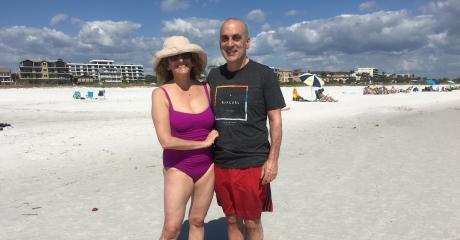For most low-income older adults, where they will live as they age is shaped by whether they can afford to continue to live in their homes and communities. Increasingly, what is missing is an affordable and accessible place to live. The primary reason for the sharp rise in older adults experiencing homelessness is economic—they simply can’t afford the rent.
To be considered affordable, housing should cost no more than 30% of one’s income. Today, more than 3 million older adults live in households that are severely rental cost burdened, paying more than half of their incomes for housing, leaving them one unplanned medical or car repair bill away from eviction. It also means that they have less to spend on food, healthcare and other basic needs. Data continues to show that the share of renters who face unaffordable rents increases with age.
The U.S. Department of Housing and Urban Development (HUD) 2021 Report to Congress on Worst Case Housing Needs concluded that in the two years from 2017 to 2019, the number of very low-income older renter households paying more than half of their income for rent increased by 16%. These precariously housed older adults are disproportionately Black, Native American and Latino/a older renter households.
Lack of Affordable Housing
What has caused this dire shortage of affordable homes? The nation’s publicly subsidized housing is a vital source of stable, affordable homes for more than 900,000 low-income households, of which a large majority have incomes below the poverty line and more than 70% are headed by a person of color. Yet decades of federal disinvestment in affordable housing have meant that as of 2021, there were only 37 affordable and available affordable rental homes for every 100 renters with extremely low incomes—defined as those households living at or below the poverty line, or 30% of the area median income (AMI), whichever is greater.
In states and major metropolitan areas with high housing costs, the scarcity of affordable rental units is much worse. This lack of affordable housing falls particularly hard on the lowest income older adults, because almost half (48%) of extremely low-income renters are elders or people with disabilities. This is why there are so many older people living on the streets; not only is the homeless population aging, almost half of unhoused older adults experience homelessness for the first time after age 50.
The average rent affordable to an older adult on SSI is $238, but the average rent nationwide is $1,061 for a one bedroom.
Rapidly rising rents are outstripping the ability of older adults living on low, fixed incomes to afford private market rents. In 2021, the average rent affordable to an older adult living on Supplemental Security Income (SSI) was $238/month, yet the average fair market rent for a one-bedroom apartment was $1,061, more than the full SSI benefit amount in every state. Private developers are constructing new units to serve the higher end of the rental market, but not enough new low-cost units are being built to meet the demand.
At the same time, each year, the stock of affordable rental units shrinks, as residential buildings’ affordability restrictions expire. These building developers got low or no-cost mortgages in exchange for a contractual obligation to provide some or all of the units in their building at below market rents. When these contractual obligations expire, the units are at high risk for conversion to market rent, making them unaffordable to low-income older renters who may have lived there for decades. According to the National Housing Preservation Database, more than 312,000 publicly supported rental homes with affordability restrictions are set to expire in the next 5 years.
Racist Zoning Restrictions
Finally, local zoning restrictions that limit the vast majority of available space to single family homes are rooted in racist, exclusionary policies that deny low-income renters access to large swaths of neighborhoods and continue to block the construction of denser and more affordable rental housing.
Here are six specific actions we can take to reverse these trends:
- Expand all HUD-assisted affordable housing programs, including vouchers, public housing, the Housing Trust Fund and the Section 202 housing program targeted to low-income older adults;
- Fully fund the federal Housing Choice Voucher program to expand access to rental assistance to all renter households who qualify, and adopt similar rental assistance programs at the state level;
- Preserve and protect the existing federally assisted housing stock whose affordability restrictions are expiring to prevent the loss of hundreds of thousands of affordable housing units.
- Establish stronger renter protections, including banning discrimination against voucher holders so that landlords can’t arbitrarily refuse to accept a voucher for the stated rent;
- Require a greater percentage of new and rehabilitated units be physically accessible to meet the growing needs of older adults with disabilities; and
- Enact the SSI Restoration Act of 2021 to bring the federal benefit rate for SSI recipients up to at least the federal poverty level.
With significant federal, state and local investments to grow the supply of deeply affordable, low-barrier, age-friendly housing, we can stem the tide of rental instability and homelessness for older renters, so that all elders can afford to age in place.
Patti Prunhuber is senior housing attorney at Justice in Aging, in its Oakland, Calif., office.
Photo credit: Elena Berd, Shutterstock









